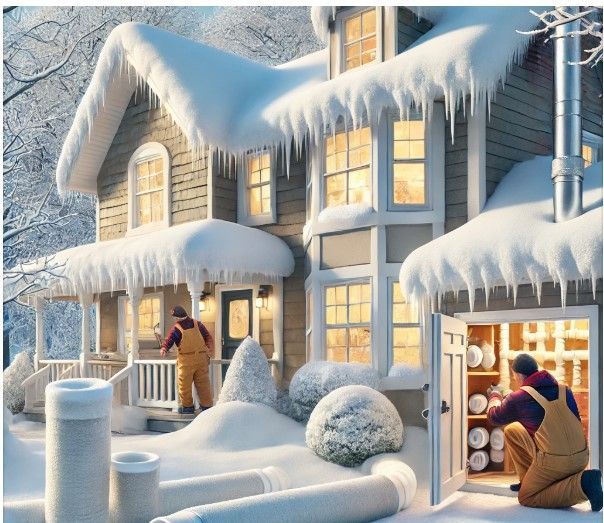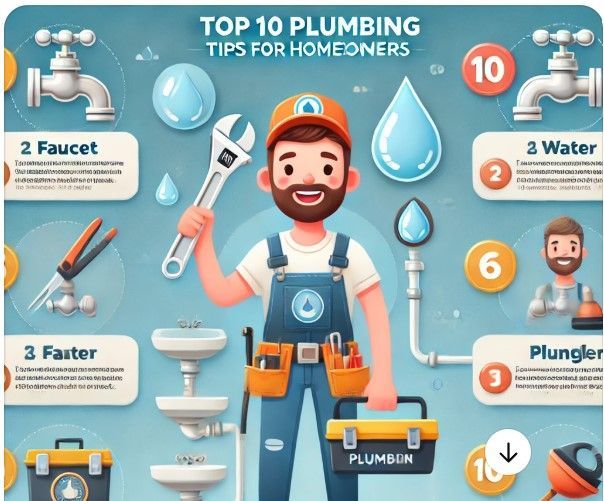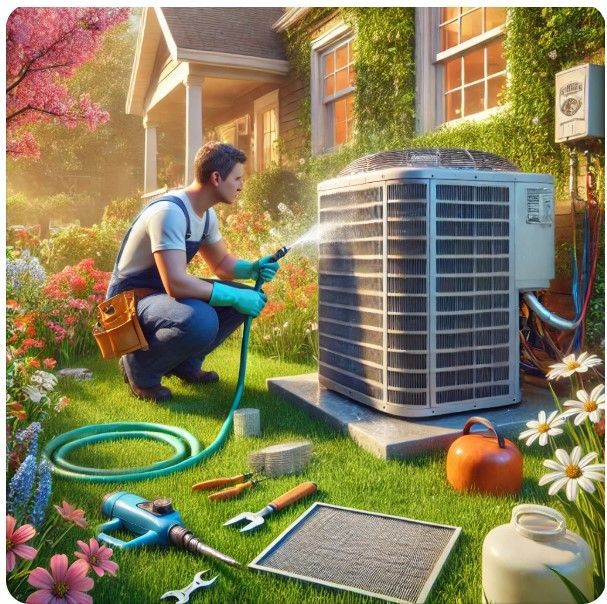Save on Energy with Heating Tips for November in Buffalo, NY
Tips to Protect Your Home from Plumbing Issues in Buffalo

Winter in Buffalo is no joke. With temperatures often plummeting well below freezing, the risk of frozen pipes and other plumbing issues skyrockets. For homeowners, a burst pipe during winter isn’t just inconvenient—it’s expensive, stressful, and can cause significant damage to your home. But here’s the good news: with a little preparation, you can protect your plumbing system from winter’s icy grip and avoid these costly disasters.
This guide will walk you through practical, budget-friendly steps to safeguard your plumbing and heating systems during Buffalo’s notoriously harsh winters. Whether you’re a long-time homeowner or new to the area, these tips are simple, effective, and designed to help you save time and money.
Why Winter Plumbing Preparation Is Essential
Buffalo’s winters bring more than just snowstorms—they bring freezing temperatures that can freeze water inside your pipes. When water freezes, it expands, creating immense pressure inside the pipes. If the pressure builds too much, it can cause your pipes to crack or burst, leading to thousands of dollars in water damage and emergency repairs.
The good news? Most plumbing disasters caused by freezing temperatures are entirely preventable with the right preparation. And considering today’s economy, prevention is a much more affordable option than costly emergency repairs.
1. Insulate Your Pipes
Exposed pipes are the most vulnerable to freezing, especially those located in unheated spaces like basements, crawl spaces, attics, and garages. Insulating your pipes is one of the simplest and most cost-effective ways to prevent freezing.
Steps to Insulate Pipes:
Identify At-Risk Pipes: Focus on pipes along exterior walls and in unheated spaces.
Use Foam Pipe Insulation: Available at most hardware stores, foam insulation is easy to cut and secure around your pipes.
Consider Heat Tape: For extra protection, apply heat tape or heat cables to pipes in extremely cold areas before insulating them.
Cost Consideration: Foam insulation costs just a few dollars per pipe, making it an affordable option for most homeowners.
2. Seal Cracks and Drafts
Cold air can seep into your home through cracks in windows, doors, and walls, exposing nearby pipes to freezing temperatures. Sealing these drafts is an easy and affordable way to protect your plumbing.
How to Seal Drafts:
Check for Leaks: Inspect windows, doors, and areas where pipes enter or exit your home.
Use Weatherstripping or Caulking: Apply weatherstripping around door frames and caulking around window edges to seal gaps.
Insulate Crawl Spaces: Block off crawl space vents during the winter to keep cold air out.
3. Keep Your Home Warm
Maintaining a consistent indoor temperature is one of the easiest ways to protect your pipes.
What to Do:
Set Your Thermostat: Keep it at least 55°F, even if you’re away from home.
Open Cabinets: Open the cabinet doors under sinks to let warm air circulate around the pipes.
Close Garage Doors: If your garage has plumbing, keep the doors closed to retain warmth.
Pro Tip: A programmable thermostat can help you maintain consistent temperatures and save on energy costs.
4. Let Faucets Drip
When temperatures drop below freezing, allowing your faucets to drip slightly can prevent the water inside your pipes from freezing.
Why It Works:
Running water doesn’t freeze as easily as still water. A slow, steady drip relieves pressure in the system, reducing the risk of a pipe burst.
Where to Focus:
Faucets connected to pipes along exterior walls.
Both hot and cold water lines for maximum protection.
5. Disconnect Outdoor Hoses
Leaving hoses connected to outdoor faucets is one of the most common causes of frozen pipes. When water remains trapped in the hose, it can freeze, expand, and damage the connected plumbing.
How to Protect Outdoor Faucets:
Remove All Hoses: Disconnect and store them indoors.
Drain Outdoor Faucets: Turn off the water supply to outdoor faucets and drain them completely.
Use Faucet Covers: Insulated covers are an inexpensive way to protect outdoor spigots from freezing temperatures.
6. Know Where Your Main Water Shut-Off Valve Is
In the event of a burst pipe, shutting off your home’s main water supply is the fastest way to minimize damage.
What to Do:
Locate the Valve: It’s usually near your water meter, in the basement, or in a utility area.
Test It: Make sure it’s operational and not stuck.
Teach Your Family: Ensure everyone in the household knows how to turn off the water in an emergency.
7. Install Frost-Proof Faucets and Insulate Exterior Pipes
If your home is prone to freezing issues, upgrading to frost-proof faucets and insulating exterior pipes can provide added protection.
Steps to Take:
Frost-Proof Faucets: These faucets have a longer stem to prevent water from freezing in the pipe.
Pipe Insulation: Wrap any exposed outdoor pipes in foam insulation or install heated tape for extra security.
8. Schedule a Plumbing Inspection
Sometimes, the best way to ensure your plumbing is winter-ready is by calling in a professional. A licensed plumber can identify vulnerabilities and recommend solutions tailored to your home.
What to Expect from an Inspection:
Checking for existing leaks or weak spots in pipes.
Ensuring outdoor faucets are properly drained.
Assessing water heater performance for cold weather demands.
The Economic Case for Winter Plumbing Preparation
We understand that times are tough, and every expense matters. But preparing your plumbing for winter is one of the most cost-effective investments you can make as a homeowner.
Here’s why:
Cost of Prevention: Basic steps like insulating pipes and sealing drafts cost very little.
Cost of Repairs: Fixing a burst pipe and repairing water damage can cost thousands of dollars.
Energy Savings: Keeping your home well-sealed and warm also reduces your heating bills.
By taking action now, you’re not only protecting your home but also saving money in the long run.
Don’t let winter catch you off guard. By following these tips, you can keep your plumbing system safe, your home warm, and your wallet intact this season. But if you’re unsure where to start or need professional help, we’re here for you.
At MyBuffaloPlumber, our team of experienced plumbing, heating, and air conditioning professionals specializes in preparing homes for Buffalo’s toughest winters. From inspections to repairs and everything in between, we’re dedicated to keeping your home safe and comfortable.
Contact us today at to schedule your winter plumbing inspection or get expert advice on protecting your home from freezing temperatures.
Final Thoughts
Winter in Buffalo is challenging, but it doesn’t have to mean plumbing nightmares. With a little preparation, you can avoid the stress and expense of frozen pipes and burst plumbing. Take action today, and enjoy a worry-free winter knowing your home is ready for whatever the season brings.
Stay warm, stay safe, and let MyBuffaloPlumber.com help you protect your home this winter.
Designed by KDesign
Copyright 2023 MyBuffaloPlummer.com. All Rights reserved.




